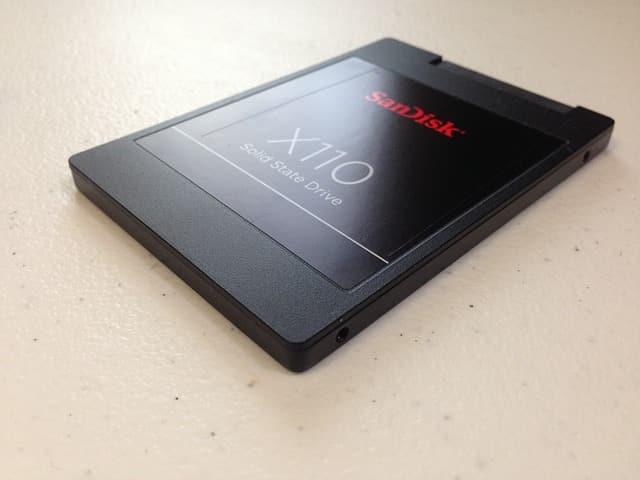Dave’s Computer Repair Blog – Securely deleting files from a solid state drive
You may remember back in a previous data recovery post ‘How to securely delete files from your hard drive’, I mentioned that SSDs (Solid State Drives) work differently to platter-based hard drives and that the usual techniques of wiping data do not apply. I also mentioned I would talk more about it. Well as promised, let us discuss securely deleting files from a solid state drive.
First, a little about how SSDs work.
In a hard drive, the operating system simply marks the page or sector of the drive as no longer in use and would overwrite it as it needed. NAND flash memory, which is the technology behind SSDs, uses blocks to divide up the drive. It also cannot overwrite data like a hard drive can.
Data can be stored in a partial block but only a complete block can be deleted. Therefore, to mark some blocks as ready for re-use or deletion, the drive has to move the partial data being kept so the block it sits inside can be deleted. This process is called Garbage Collection or GC for short. As you can imagine, it isn’t a particularly efficient technology and quickly wears out an SSD.
Operating systems neither know nor care how a hard drive stores data. It just tells the hard drive it wants something stored and leaves it to the drive to work it out. Neither does it care if it is wearing an SSD out. That’s where TRIM comes in.
TRIM was introduced as a middleman to help things along. TRIM takes the instruction to delete from the operating system and passes it on to the Garbage Collector. But rather than marking it for immediate deletion, TRIM tells Garbage Collector to mark it for eventual deletion. So, only when the complete block is naturally emptied with GC delete the data. This is why securely deleting files from a solid state drive is harder than on a traditional hard drive.
The only way to secure delete files from a solid state drive is to either physically destroy it or use a manufacturer utility to do it. We naturally prefer that second option.
Here are a few SSD manufacturers and their tools.
- OCZ Toolbox
- Intel Solid State Toolbox
- Samsung Magician Software
- Corsair SSD Toolbox
There are of course many other manufacturers of SSDs and Google if your friend there.
Each SSD manufacturer includes some kind of tool to force Garbage Collector to delete memory blocks. While this will securely delete your data, it will also reduce the operating life of the drive so use it sparingly.
If you would like to learn more about Garbage Collection and TRIM, this article is about as detailed as it gets.
If you have accidentally deleted files from your SSD and need our data recovery services, contact us today. We would be happy to help.
Thank you for reading Dave’s Computer Repair Blog, if you ever need computer repair or data recovery assistance give us a call or fill out the contact form on the bottom right of the website.


